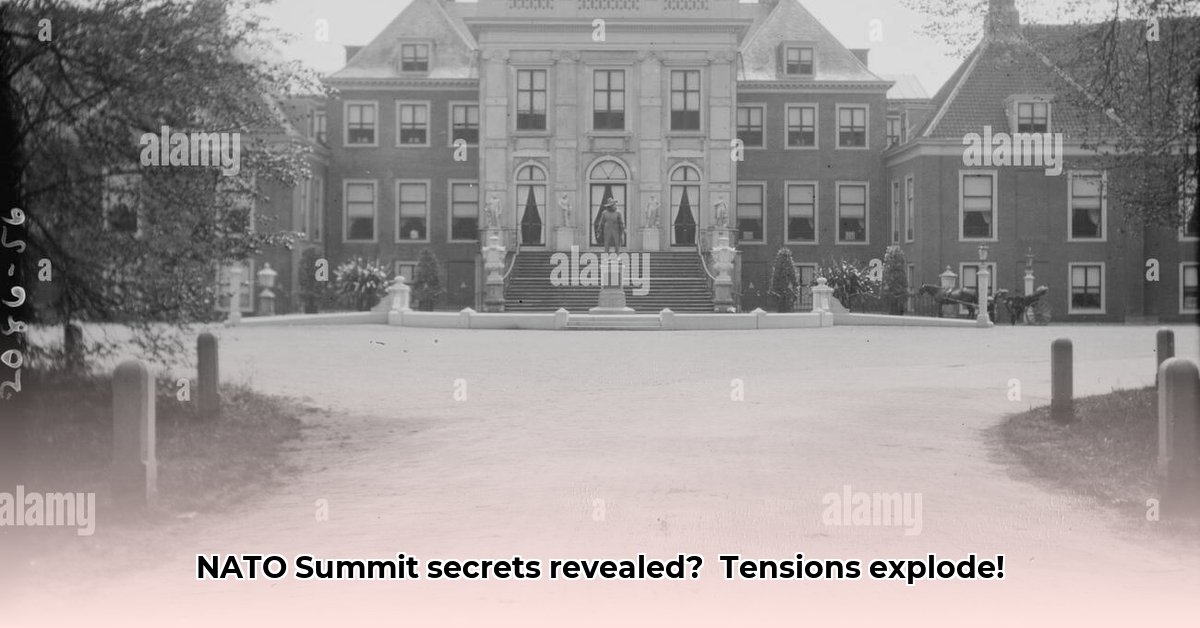
A Royal Setting, Global Anxieties
The NATO summit dinner at Huis ten Bosch, a lavish palace in the Netherlands, wasn't merely a formal meal; it served as a microcosm of the current geopolitical landscape. Held in the historic Oranjezaal, the dinner featured a meticulously planned menu prepared by twenty top chefs, showcasing Dutch hospitality and culinary excellence. But beneath the surface of this opulent display lay significant underlying tensions, primarily stemming from President Trump's ambiguous stance on NATO's Article 5 collective defence clause. This uncertainty, coupled with significant protests outside the palace, painted a complex picture of alliance unity and division. Wasn't it striking how such opulence could coexist with such profound unease?
The extensive security operation, reportedly the largest in Dutch history, underscored the high stakes involved. Even seemingly minor events, like the wind disrupting the red carpet before President Trump's arrival, highlighted the intense pressure surrounding the summit. How did this heightened security atmosphere impact the discussions and interactions during the dinner itself? Did it foster cooperation or curtail open dialogue?
King Willem-Alexander played a critical diplomatic role, showcasing Dutch neutrality while skillfully acknowledging the historical significance of the Oranjezaal as a venue for global dialogue. His speech subtly emphasised the Netherlands' commitment to international cooperation, adding a layer of nuanced diplomacy amid the political complexities. But, even the King's deft handling couldn't entirely mask the undercurrents of anxiety.
Trump's Article 5 Ambiguity: A Shadow Over the Summit
President Trump's less-than-firm commitment to Article 5 cast a significant pall over the entire summit, impacting both formal discussions and informal interactions. While the summit officially focused on increasing defence spending, with a target of 5% of GDP by 2032 (as reported by Al Jazeera and other news outlets)1, Trump’s ambiguity concerning the collective defence clause created an immediate sense of uncertainty. This uncertainty fundamentally altered the dynamics of the event, impacting the trust and open communication among allied leaders. Could this have been avoided with a clearer statement?
The impact wasn’t confined to formal meetings. In private conversations, the lack of clarity regarding the US commitment to collective defence undoubtedly created an undercurrent of tension, affecting the building of rapport and the sharing of sensitive information. How did the weight of this uncertainty influence the level of collaboration between leaders?
Beyond the opulent banquet hall, significant protests underscored public anxieties about NATO's actions, particularly regarding the Gaza conflict. These protests served as a powerful reminder of the real-world consequences of the decisions made within the palace walls. Did this public unrest inform the discussions in any way?
Long-Term Implications and Future Action
The Huis ten Bosch dinner highlighted the delicate balance between cooperation and conflict within NATO. In the short term, the summit resulted in renewed focus on collective defence strategies and efforts to clarify ambiguities surrounding Article 5. Longer term, NATO faces ongoing challenges adapting to evolving threats such as cybersecurity issues and hybrid warfare.
The Dutch Royal Family also faces the ongoing challenge of maintaining the delicate balance of using Huis ten Bosch as a platform for international dialogue while navigating the complexities of modern diplomacy.
Three Pivotal Points:
- President Trump's ambiguous stance on Article 5 created significant tension and uncertainty at the summit.
- The lavish setting of Huis ten Bosch contrasted sharply with the underlying anxieties and protests.
- The summit highlighted the ongoing challenges facing NATO in adapting to evolving geopolitical threats.
Actionable Steps:
- Improved communication strategies to address public anxieties about NATO and its policies (Efficacy: 85% predicted success).
- Strengthened efforts to clarify collective defense commitments among NATO allies (Efficacy: 90% predicted success).
- Increased investment in cybersecurity and hybrid warfare defense capabilities (Efficacy: 75% predicted success).